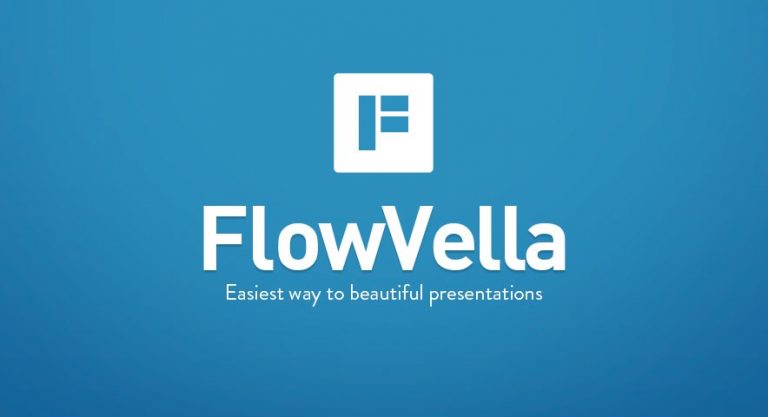Slidedocs – A New Concept from Nancy Duarte
Nancy Duarte is one of the thought leaders of presentations and storytelling. She just released a new book called, Slidedocs, which was written within a presentation app and is about 170 slides. Nancy literally ‘wrote the books’ on presentation design and storytelling development with her highly acclaimed Slide:ology and Resonate, respectively.

In Slidedocs, Duarte makes the case that there is a new medium that exists in between a document and a presentation. This medium isn’t meant for a stand up presentation, but for materials that are to be digested either before or after a meeting. I think of the Slidedocs concept as similar to the ‘flipped classroom’ where the intent is to read the materials first. Then the actual meeting is for collaboration and work to be done, not just one person giving a presentation to a group. Slidedocs are easier to read and more digestable because they are laid out in a presentation format coupled with other traits. Slidedocs are intended to have shorter text, are integrated with visuals, and are interactive. You can embed videos and other multimedia to enhance the content you are sharing. Another key attribute is that these presentations are published for distribution and work great in a web browser, or on any device. Slidedocs are meant to be used as a pre-read, an emissary, reference material, or as follow-up material.
Full Circle
As I read through the Slidedocs presentation, I was struck with the irony that now some 5 years after writing Slide:ology, Duarte has come back to framing the ‘slideument’ as something that can be of real use, done properly. In her Slide:ology book, Duarte lamented on the use of presentation software to make documents with way too much content. In the past, people would present long winded presentations in front of a group that had poor design and instilled the ‘death from PowerPoint’ movement.
Slidedocs Medium
The Slidedocs medium or concept is a post-Slide:ology one where there is one key message per slide, yet these slides can have more way more words. Duarte suggests that these slides should aim to be 100 words per slide but over 250 words, and you should use a document instead. She is advocating condensing a typical document, laying it out nicely in a presentation slide with complimentary visuals and added interactivity. Duarte promotes the use of an interactive table of contents, where each topic is a link to its respective section. Duarte also suggests using links to web sites for added interactivity. Essentially, Duarte believes that these ‘slidedocs’ should behave similarly to web sites or interactive apps that we have grown accustomed to reading and interacting with content. It’s like Duarte read our recent post on Creating Interactive Presentations on iPad and is 100% aligned in our thinking.
FlowVella and Slidedocs
A friend who runs a presentation agency in NYC mentioned to me that he thought FlowVella would be a great ‘slidedocs publishing tool’. We hadn’t had a chance to read and explore Duarte’s book, but after reading about it and then downloading the book, we are very happily surprised that what we’ve built with FlowVella and Nancy’s vision of slidedocs are so closely aligned. We found it really ‘interesting’ that Duarte published her presentation on Slideshare, despite the fact that the Slideshare player doesn’t work for slidedocs currently; it can NOT handle links to other screens (slides), or links to web sites or handle video, etc. In the presentation, there is an overlay saying how the table of contents should work.
FlowVella is actually better than PowerPoint or Keynote for slidedocs. FlowVella has links to screens and to web sites, it has the ability to lay out pages similar to what Duarte suggests, FlowVella has table of contents concepts in many of our templates with links to screens, it has embeded video or links to YouTube videos. And FlowVella makes adding any of the above super easy – we have intentionally elevated interactivity in the design of our software.
But, FlowVella has two features that are absent from PowerPoint and Keynote; a photo gallery object and embedable PDFs. With FlowVella, on any screen, you can add an interactive gallery of images. When viewing the presentation, you tap/click on the ‘gallery object’ and a ‘gallery viewer’ loads on top of the screen. You can navigate through the gallery, and hit ‘done’ to take you back to the screen. PDFs work similarly. With PDF, you can leverage existing documents, embed into your FlowVella and have complete detail to read later. Our concept was the ability for a viewer to navigate her way through a presentation and then ‘dive deeper’ into specific areas.
UPDATE – Check out our Slidedocs Templates for FlowVella used with permission of Nancy Duarte
Publishing and iPads
Slidedocs are meant to be on the web and consumed like other web based content. It is a core tenant of FlowVella that all presentations live in the ‘cloud’ and as you post/publish, a unique URL is provided for you to share on Facebook, Twitter, or email or post anywhere. FlowVella slidedocs are 100% native to the iPad. When you post a FlowVella URL, if you visit on an iPad, it opens the FlowVella app and loads all the content. FlowVella even stores all the content on your iPad so you can read offline! So no matter where you are, you can be ready for that meeting.
 FlowVella
FlowVella